
Branches are usually based on the fact that your business trades in different places, for example in different states, suburbs, streets. There is no limit to the number of branches that your Jim2 database can manage.
In Jim2, it is common for users to filter their profit & loss reports by branch. These filters are easy to use, and allow grouping of values per branch, sub-totalling of values per branch, and filtering to only show branch relevant values.

These branch filters are also available for grouping, sub-totalling and hiding in lists throughout Jim2.
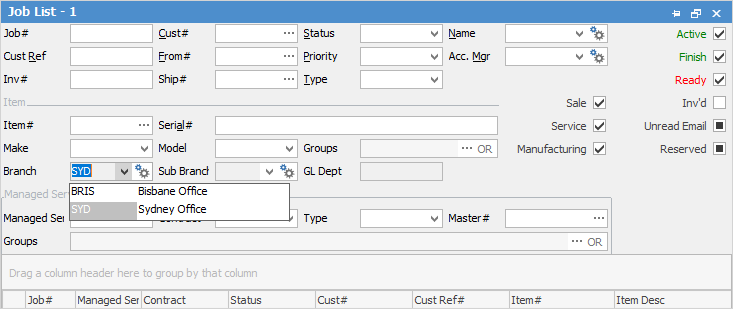
Each branch will typically have at least one stock location specifically for that branch. This is known as the default stock location for the branch.
Customers, vendors and Jim2 users can be allocated to branches, allowing filtering to be used in areas such as debtors and creditors, and to assist with some default settings throughout Jim2, including jobs, purchases and quotes.
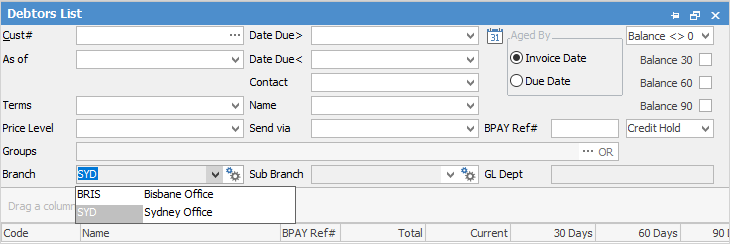
Each branch can have its own logo for invoices, statements, purchase orders, quotes and other reports, if desired.
Expense orders, cheque book entries and general journals can have each line report to a branch, allowing for one supplier invoice to be separated into expenses allocated to various branches. This suits expenses such as advertising invoices where each branch is allocated some of the cost.
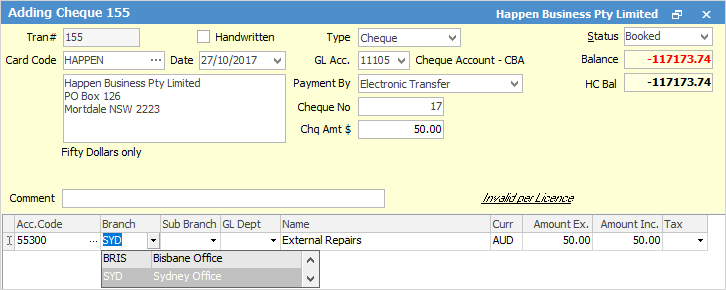
In Jim2 financial reporting, a branch only impacts on profit & loss general ledger accounts. When branches are used in transactions involving only balance sheet accounts (eg. bank, petty cash, credit card, stock on hand accounts), the branch is only used for list filtering, not for profit & loss reports.
Branch settings allow you to nominate whether a branch must be used (required), or if it is optional.
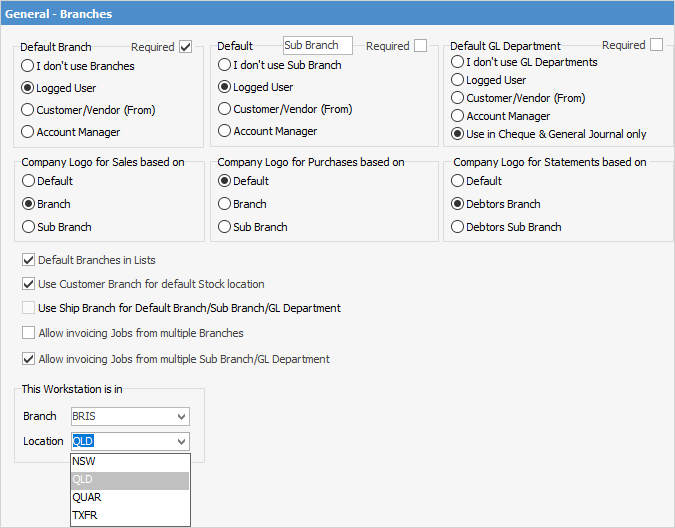
When Default Branch is set to Customer/Vendor (From), and a user sets the customer (or vendor) on a job, quote or PO, the branch is set based on that customer (or vendor). The same applies for SubBranch and GL Department.
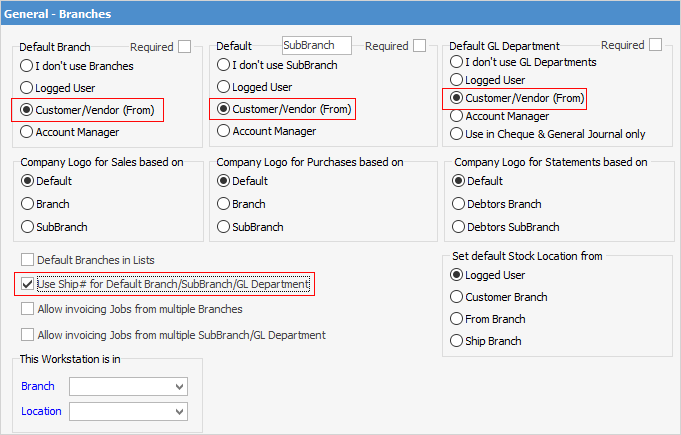
When Use Ship Branch for Default Branch is ticked, the ship is used to set Branch. This will only work when Default Branch is set to Customer/Vendor (From). The ship will set SubBranch when Default SubBranch is set to Customer/Vendor (From). The same applies for GL Department.
 |
If you enable the use of Branches at a later time, you may receive warning messages about selecting a branch in some objects where it wasn't required before turning on Branches. To get past this, go to Tools > Options > Branches and untick Required, select Refresh and try the transaction again. Once finished, re-enable Branches in Options.
 |
Other P&L Filters That are Similar to Branches
Jim2 also has filters named SubBranch and GL Department. There are key differences between branches, sub-branches and GL departments:
Branch |
SubBranch |
GL Department |
|---|---|---|
P&L and Reports Filter |
P&L and Reports Filter |
P&L and Reports Filter |
Can be enforced or optional |
Can be enforced or optional |
Can be enforced or optional |
Only applies to P&L accounts (not balance sheet accounts) |
Only applies to P&L accounts (not balance sheet accounts) |
Only applies to P&L accounts (not balance sheet accounts) |
Can be used for list filtering |
Can be used for list filtering |
Can be used for list filtering |
Allows for a branch-specific logo on invoices, purchases and statements |
Allows for a branch-specific logo on invoices, purchases and statements |
Can be used for cheque and general journal entries only (if required) |
Workstations nominated per branch |
Can be renamed (eg. Division) |
|
Allows for a default stock location |
||
Email Templates |
||
Email Editor Rules |
Further information: